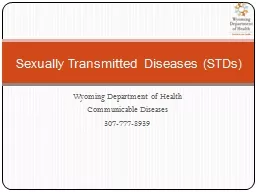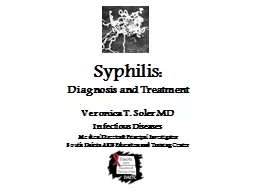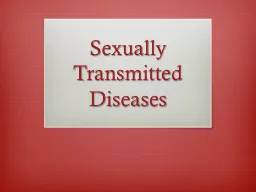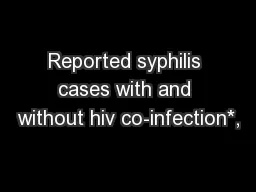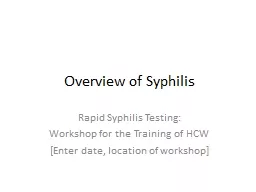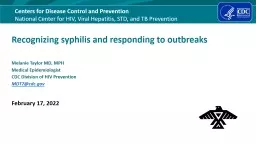PPT-STDS SYPHILIS a bacterial infection usually spread by sexual contact
Author : gelbero | Published Date : 2024-01-29
The disease starts as a painless sore typically on the genitals rectum or mouth Syphilis spreads from person to person via skin or mucous membrane contact with
Presentation Embed Code
Download Presentation
Download Presentation The PPT/PDF document "STDS SYPHILIS a bacterial infection usua..." is the property of its rightful owner. Permission is granted to download and print the materials on this website for personal, non-commercial use only, and to display it on your personal computer provided you do not modify the materials and that you retain all copyright notices contained in the materials. By downloading content from our website, you accept the terms of this agreement.
STDS SYPHILIS a bacterial infection usually spread by sexual contact: Transcript
Download Rules Of Document
"STDS SYPHILIS a bacterial infection usually spread by sexual contact"The content belongs to its owner. You may download and print it for personal use, without modification, and keep all copyright notices. By downloading, you agree to these terms.
Related Documents



